The idea that Springfield, Ohio once enjoyed a brilliant moment in history might today seem impossible to believe. But it was once among the most important and prosperous cities of a rising young nation. For real! I see the skepticism in your eyes, but honestly, just head into the city’s center and take a look around. The proof of Springfield’s former glory is all around, in the architectural marvels that dominate its streets.
Table of Contents
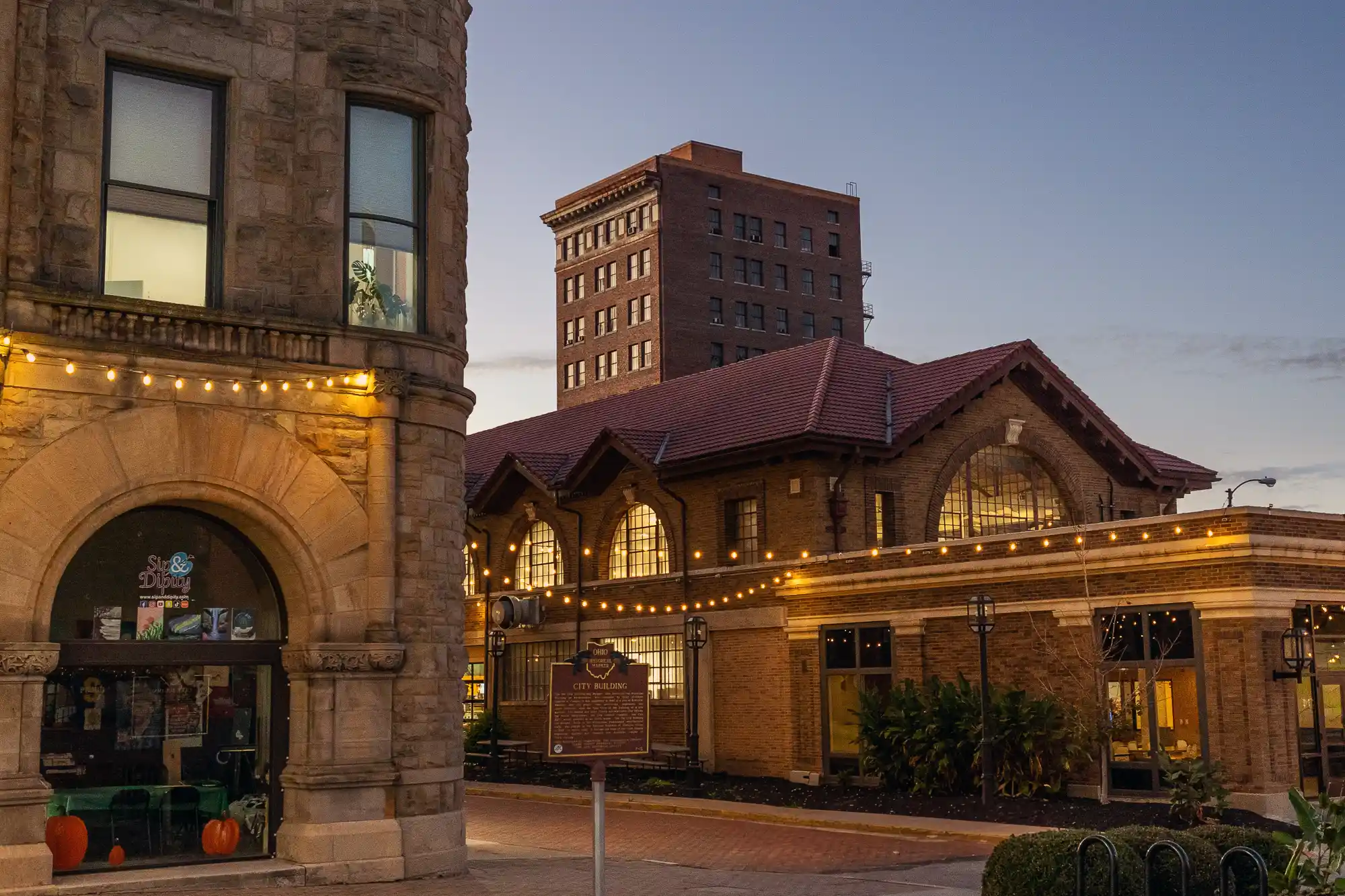
We’ve long appreciated the beautiful buildings of Springfield, but have never known anything about them other than, “gosh they’re pretty”. So when an opportunity arose to take an architectural tour with a legitimate expert, we jumped at the chance. Historian Kevin Rose has made his career helping residents and visitors see past the shroud of depression that’s settled over the city, and appreciate Springfield’s rich history. We joined him for an engaging walk through downtown.
Our tour started at the former City Building, which is now home to the Heritage Center, and a popular cafe called Un Mundo. Over the years, we’ve been to both several times. But we had never appreciated the true grandeur of the building itself… which is probably because you have to step way back in order to really appreciate it. Although it’s just 50 feet wide, the City Building is 460 feet in length — the size of an entire block — and also held the City Hall, along with Springfield’s main market. Impressive even by today’s standards, the building must have been unbelievable when it opened in 1890.
Walking Tour Video
Making our way up High Street, we soon found ourselves at the Warder Library. At this point, I should probably confess something. Kevin is enthusiastic about the architectural history of Springfield, and really knows the details. And during the tour, he was throwing out names and dates faster than I could possibly assimilate them. I hadn’t brought a notebook, and even if I had, it would have been nearly impossible to get down all the architectural styles and schools, the wealthy families, the industrial titans, and the former businesses that once ruled Springfield. Early on, I decided to eschew the details; getting a general sense of the history would have to be enough.
But yeah, the Warder Library! This was commissioned at the end of the 19th century by a powerful family out of Philadelphia. Back then, libraries weren’t really public institutions, but “clubs”, funded by the rich and generally open only to members. But the Warder family decided to buck that trend, and opened their brown sandstone library to the public, in particular to the workers of Warder’s factories. Kevin pointed out some of the architectural flourishes which have landed this building on the register of historic places — creatures like monkeys (to symbolize curiosity) and owls (for wisdom), hand-carved into the stone.
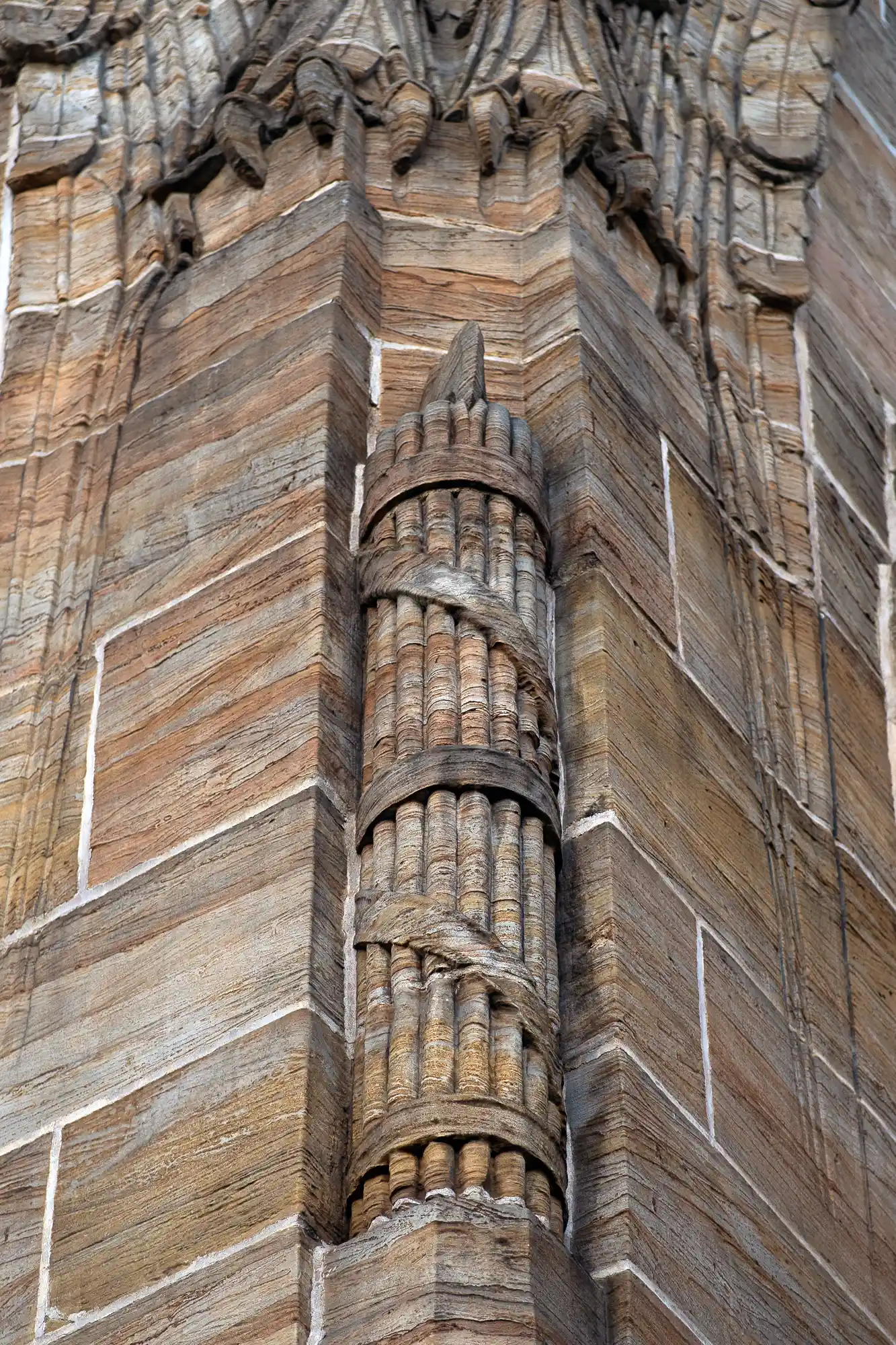
We continued north, up Spring and Limestone Streets, until arriving at the Post Office. Again, this was a building we’d visited multiple times in the past, but one we had never bothered to step back and appreciate. A product of the New Deal, this Art Deco building dates from the 1930s, and includes fascinating decorative elements, such as columns that end with a bundle of sticks supporting an axe. Called a “Fasces“, this is a Roman symbol which represents the power and strength of a central authority, and which gave birth to the term “fascism”.
The afternoon was growing long, and the sun was starting its descent, but we still had time to appreciate the Springfield News-Sun building — another product of the 1930s, today home to a fitness studio — as well as the Bushnell Building from 1893. This stunning neo-classical structure was once Wren’s, Springfield’s preeminent department store, and now provides office space. We loved the flat, horizontal, multi-hued brick which gives the building such depth and personality.
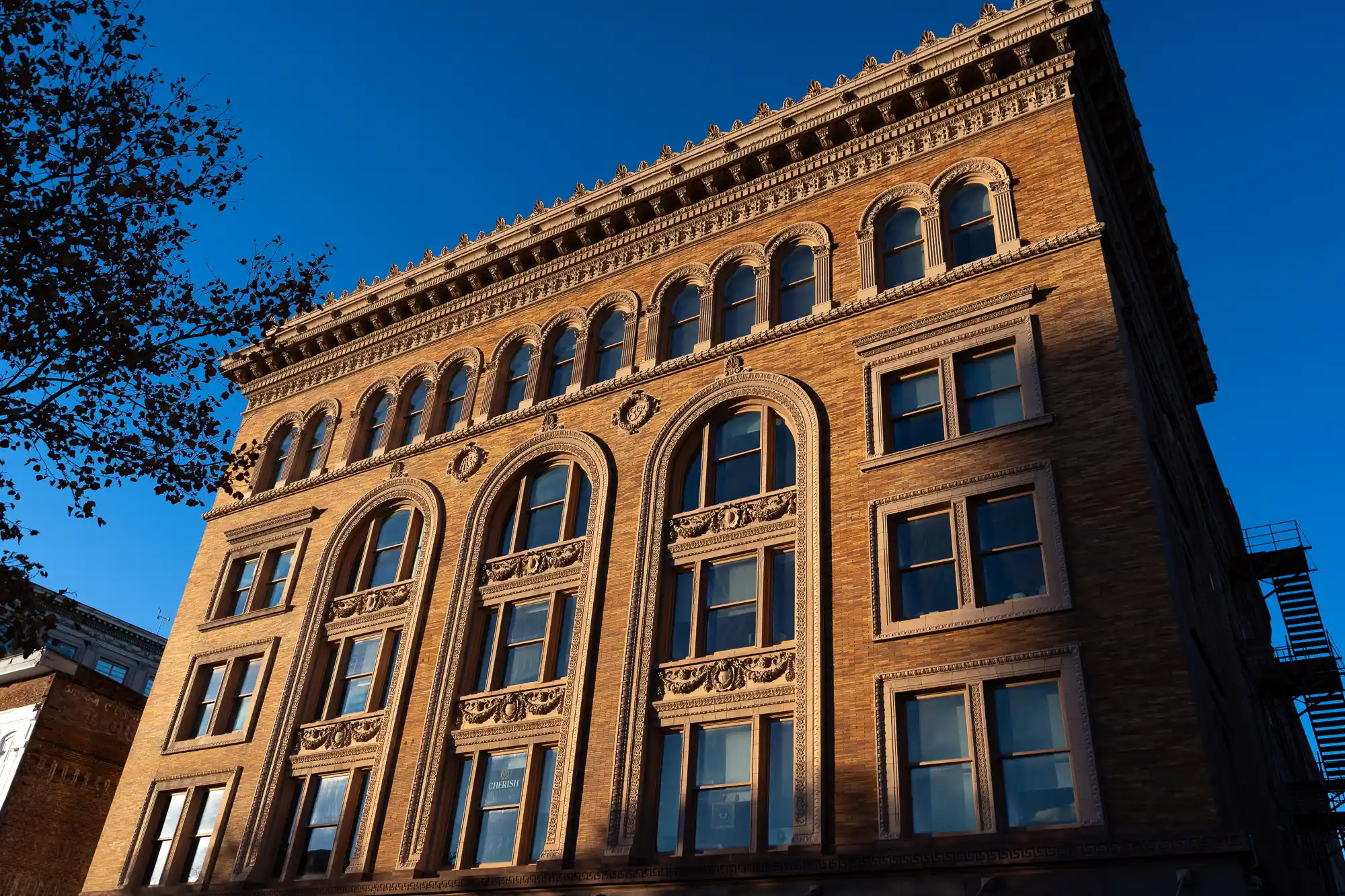
This was a fascinating tour, and really opened our eyes to the former glory of Springfield. It would have been incredible to see the city during its hey-day, when it played host to some of the nation’s most prominent architects, businessmen and politicians, and it’s sad that those days are firmly in the past.
If you’d like to do something similar, Kevin Rose has organized a wide-ranging array of local tours, which can be browsed on his website. He doesn’t personally run all of them, but has listed the organizations which you can contact, if you’re interested.
Walking Tour Info
This site contains affiliate links. We may receive a commission if you make a purchase. More Information!
Springfield, Ohio Photos
Most images and videos can be licensed for commercial and editorial use, please contact us to find out more.
Springfield Map
Architecture FAQs
Has Springfield preserved its historic buildings?
Springfield is dedicated to preserving its architectural legacy, with notable restorations like the Heritage Center. The city is also engaged in efforts to breathe new life into historic structures while ensuring they retain their unique character.
Can I visit any historic buildings in Springfield?
Many landmarks, such as the Heritage Center and the Bushnell Building, are open for public exploration. Some have been adapted into museums, event spaces, or commercial venues, allowing visitors to appreciate their historical context and architectural charm.
Are there any historic churches downtown?
Indeed, downtown Springfield boasts a number of historic churches that contribute to its architectural beauty. Highlights include the impressive Gothic-style St. Raphael Catholic Church and the exquisite Christ Episcopal Church.
Related Articles
Springfield Fall Art
This framed print reflects a serene scene from a Springfield, Ohio cemetery, where vibrant autumn foliage and warm sunlight create a tranquil atmosphere. Accented by charming pumpkins, it’s an inviting piece to enrich your home decor.
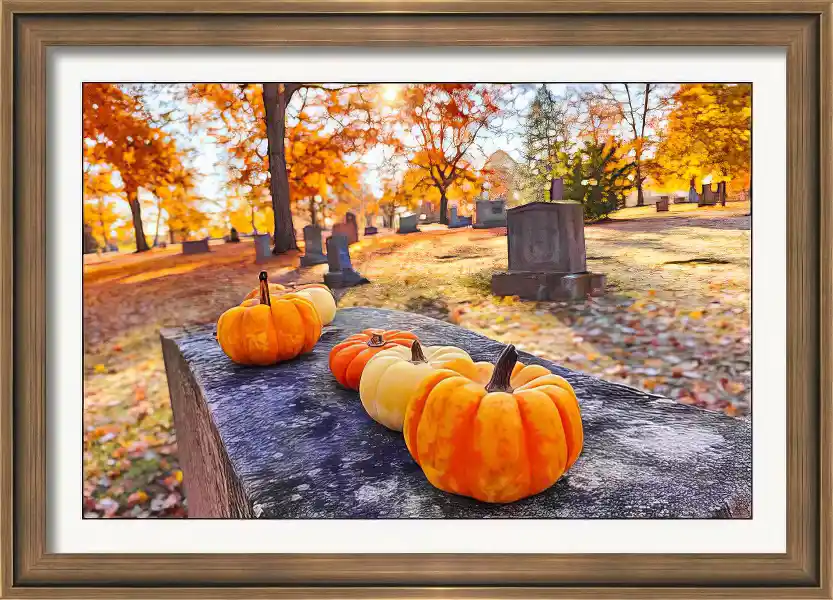
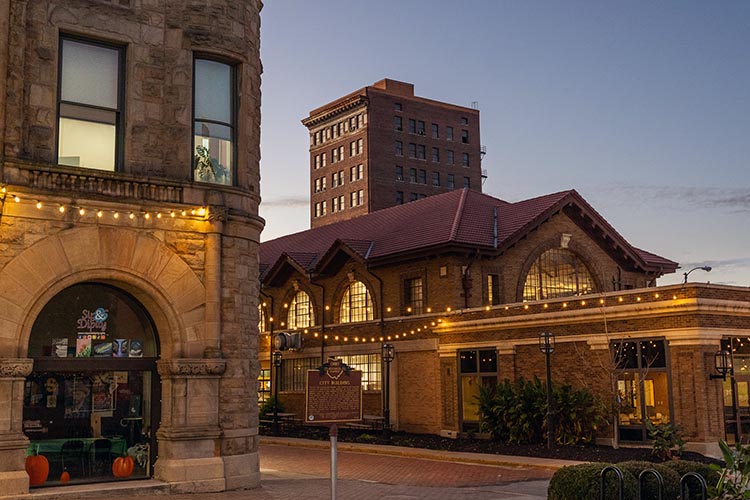
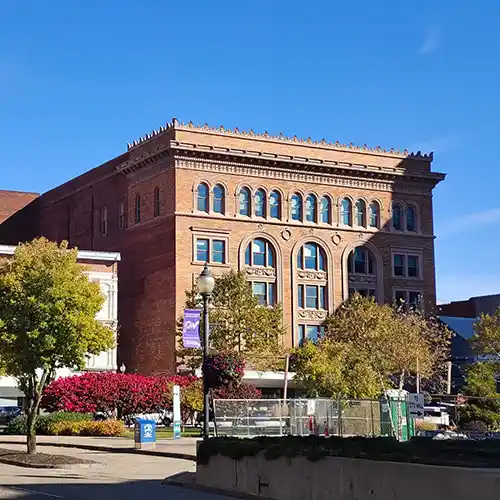

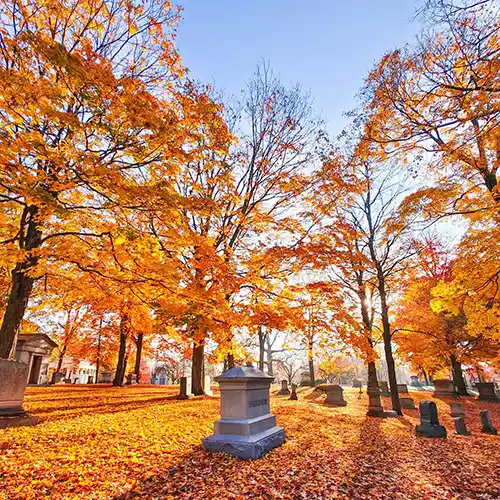


Leave a Reply